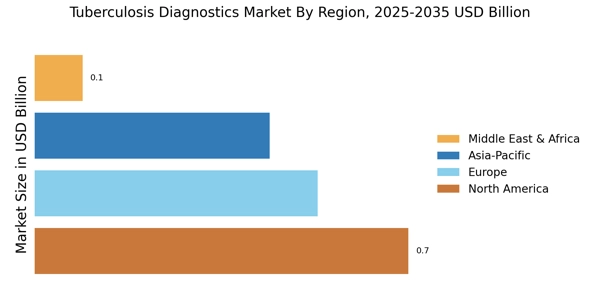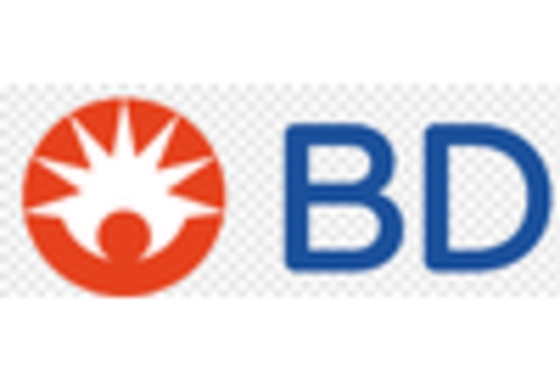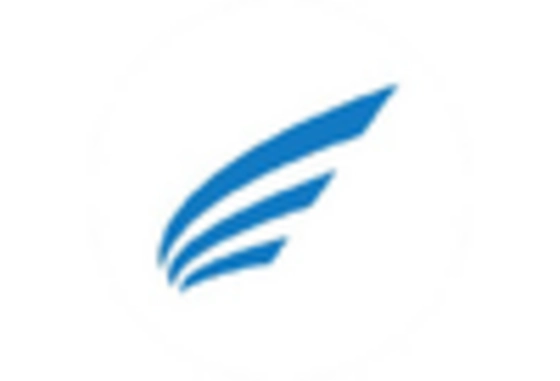Rising Incidence of Tuberculosis
The increasing incidence of tuberculosis (TB) worldwide is a primary driver for the Tuberculosis Diagnostics Market. According to the World Health Organization, there were approximately 10 million new TB cases reported in 2020, highlighting a persistent public health challenge. This rising trend necessitates the development and deployment of effective diagnostic tools to identify and treat TB cases promptly. The demand for rapid and accurate diagnostic solutions is expected to grow, as healthcare systems strive to manage and control TB outbreaks. Furthermore, the emergence of drug-resistant strains of TB complicates treatment protocols, thereby amplifying the need for advanced diagnostic technologies. As a result, stakeholders in the Tuberculosis Diagnostics Market are likely to invest in innovative solutions that can enhance detection rates and improve patient outcomes.
Increased Awareness and Education
Increased awareness and education regarding tuberculosis are pivotal in driving the Tuberculosis Diagnostics Market. Public health campaigns aimed at educating communities about TB symptoms, transmission, and the importance of early diagnosis have led to a rise in testing and screening initiatives. As individuals become more informed about the disease, they are more likely to seek diagnostic services, thereby increasing demand for TB testing. Furthermore, healthcare professionals are being trained to recognize TB symptoms and recommend appropriate diagnostic tests, which enhances the overall detection rate. This heightened awareness not only contributes to early diagnosis but also helps in reducing stigma associated with TB, encouraging more individuals to seek help. Consequently, the Tuberculosis Diagnostics Market is likely to benefit from this growing emphasis on education and awareness.
Government Initiatives and Policies
Government initiatives and policies aimed at combating tuberculosis are significantly influencing the Tuberculosis Diagnostics Market. Many countries have implemented national TB control programs that prioritize early diagnosis and treatment. For instance, funding allocations for TB diagnostics have increased, with governments recognizing the importance of timely detection in reducing transmission rates. The WHO's End TB Strategy emphasizes the need for improved diagnostic capabilities, which has led to the adoption of new technologies such as molecular diagnostics and rapid tests. These initiatives not only enhance the availability of diagnostic tools but also encourage public-private partnerships to foster innovation in the Tuberculosis Diagnostics Market. As governments continue to prioritize TB control, the market is expected to witness sustained growth driven by supportive policies and funding.
Emergence of Drug-Resistant Tuberculosis
The emergence of drug-resistant tuberculosis (DR-TB) is a critical factor influencing the Tuberculosis Diagnostics Market. As the prevalence of DR-TB rises, there is an urgent need for advanced diagnostic tools that can accurately identify resistant strains of the bacteria. The WHO estimates that approximately 3.3% of new TB cases and 18% of previously treated cases are multidrug-resistant, necessitating the development of specialized diagnostic tests. These tests are essential for guiding appropriate treatment regimens and preventing further transmission of resistant strains. The increasing complexity of TB management due to drug resistance is likely to drive innovation in the diagnostics sector, as stakeholders seek to develop solutions that can effectively address this challenge. Thus, the Tuberculosis Diagnostics Market is poised for growth as it adapts to the evolving landscape of TB treatment and diagnosis.
Technological Innovations in Diagnostics
Technological innovations are reshaping the Tuberculosis Diagnostics Market, offering new avenues for enhanced detection and management of TB. Advances in molecular diagnostics, such as polymerase chain reaction (PCR) and next-generation sequencing, have significantly improved the speed and accuracy of TB diagnosis. These technologies enable the identification of TB pathogens in a matter of hours, which is crucial for timely treatment initiation. Additionally, the integration of artificial intelligence and machine learning in diagnostic tools is expected to further streamline the diagnostic process, allowing for better patient stratification and management. The market for TB diagnostics is projected to grow as healthcare providers increasingly adopt these innovative technologies to improve patient care and outcomes. The ongoing research and development in this field suggest a promising future for the Tuberculosis Diagnostics Market.


















Leave a Comment